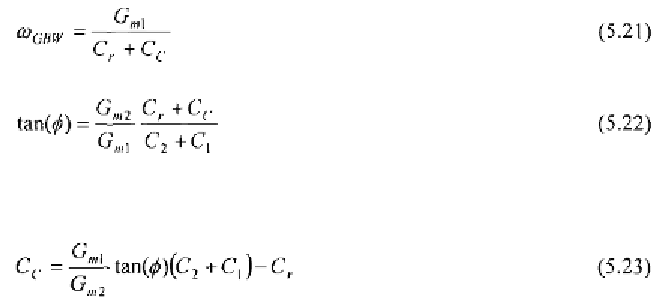Environmental Engineering Reference
In-Depth Information
and the required compensation capacitance must be set according to
For a fixed phase margin is proportional to the ratio between the
transconductance of the first and second stage. Moreover, it is proportional
to the total (input-output) capacitance. Note also that for a given DC gain
and phase margin, the gain-bandwidth product is set by the frequency of
second pole. Consequently, to compare the Miller and dominant-pole
compensations we can compare only the second poles, and it is apparent that
the second pole resulting from the Miller compensation is much higher (due
to pole-splitting) than that of a dominant-pole compensated amplifier. In
addition, Miller magnification allows us to use lower capacitance values.
For these reasons the Miller compensation technique is extensively used
to design IC amplifiers. Compensation capacitor can be fabricated as a
part of the amplifier (in this case the amplifier is said to be
internally
compensated
) or can be externally applied to pins reserved for this purpose
on the (
uncompensated
) opamp package.
By comparing (5.20) and (5.21), we find that we can neglect the right-
half plane zero when the transconductance gain of the second stage is much
higher than that of the first stage. This condition is seldom satisfied in
CMOS transconductance amplifiers and especially when low-power
dissipation is required, so that a specific strategy to compensate the zero
must be applied.
5.3 COMPENSATION OF THE MILLER RHP ZERO
In the previous paragraph we showed that the pole-splitting technique is a
convenient vehicle for achieving the desired pole separation in an open-loop
phase-inverting amplifier. Unfortunately, (5.20) indicates that the larger the
,the lower the RHP zero. In bipolar technologies the transconductance
is invariably large enough to ensure that the frequency of the zero is
greater than the compensated unity-gain frequency, thereby rendering the





